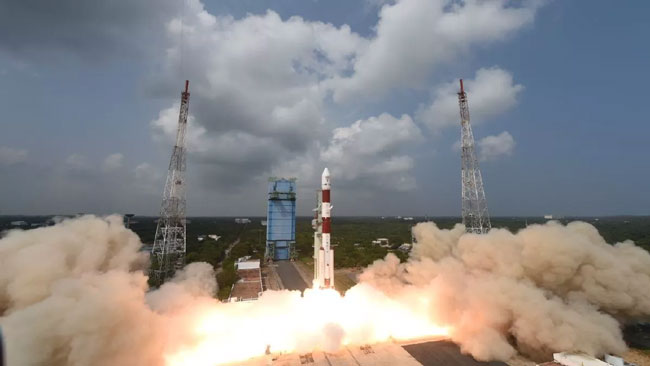New Delhi:India is set to launch its most advanced communication satellite, GSAT-N2, also known as GSAT-20, in collaboration with SpaceX. The satellite will be launched from Cape Canaveral, USA, using SpaceX’s Falcon 9 rocket. Developed by the Indian Space Research Organisation (ISRO), the satellite weighs approximately 4,700 kg, making it unsuitable for launch with Indian rockets, hence the commercial collaboration with SpaceX.
Internet Services for Remote Areas and Flights
Once operational, GSAT-N2 will provide internet and data services to remote regions of India. Additionally, it will enable in-flight internet connectivity for passengers on airplanes. However, the rollout of these services will require service providers to acquire licenses and equip aircraft with satellite-based internet technology.
India’s Most Advanced Ka-Band Satellite
According to reports, GSAT-N2 will fill the gap in in-flight internet connectivity, which was unavailable in Indian airspace until now. Equipped with a multi-beam architecture and spot beam technology, the satellite has 32 user beams, including narrow beams for northeastern regions and wider beams for other parts of India.
NSIL Leads Commercial Launch
The launch is being managed by New Space India Limited (NSIL), ISRO’s commercial arm. This marks NSIL’s second commercial satellite launch, with 11 other satellites already serving Indian territories. The collaboration with SpaceX comes at a cost of approximately ₹500 crore, opening doors for more such partnerships in the future.
14-Year Mission Life
With a mission life of 14 years, GSAT-N2 is expected to revolutionize broadband and in-flight connectivity in India. American satellite service provider Viasat Inc will also use GSAT-20 for in-flight and maritime connectivity services in India, further enhancing the country’s telecom capabilities.
SpaceX and Falcon 9
Founded by Elon Musk in 2002, SpaceX specializes in cost-effective space missions. The Falcon 9 rocket, known for its reusability, has been chosen for this launch. It is named after the fictional spacecraft Millennium Falcon and is one of the most reliable launch vehicles for satellite missions.
This collaboration highlights India’s growing stature in global space and telecom technologies, setting the stage for future innovations.




